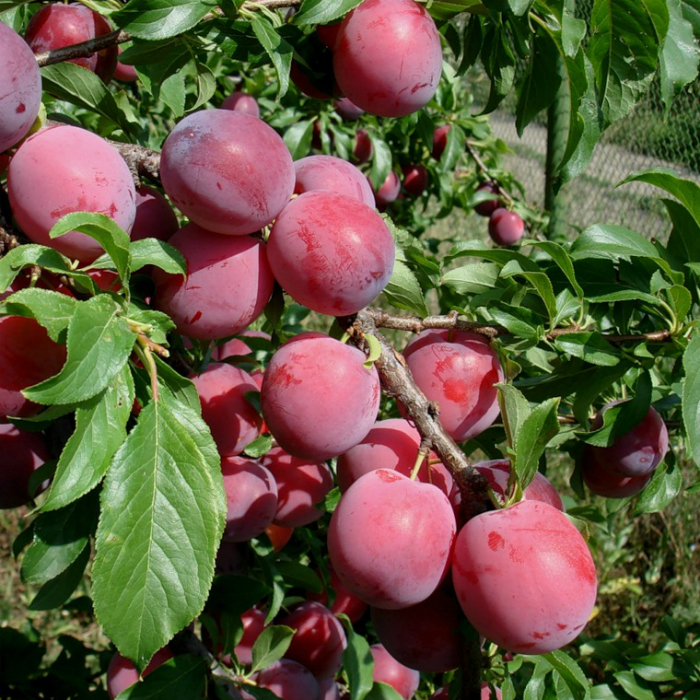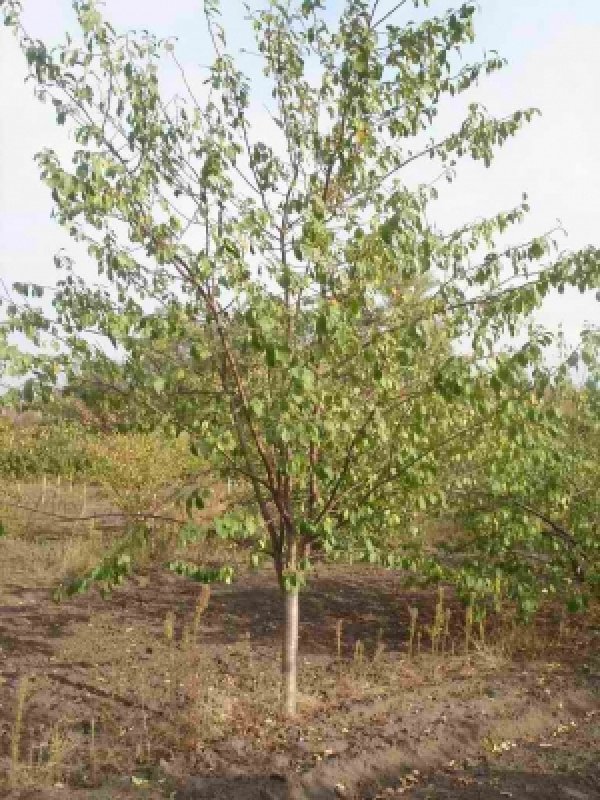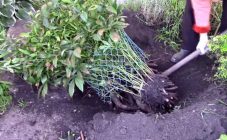Today it is difficult to imagine a suburban area where the plum would not grow. This crop is distinguished by its resistance to Russian frosts, the ability to adapt to changeable conditions and good yield.
Fruits of all kinds of shades: from yellow to purple and bluish-black, in addition to excellent taste, also have healing properties. Due to this, the mature product is recommended for people with digestive disorders, kidney problems, anemia and some other diseases.
Most varieties of plums are not demanding to care for. The most common for central Russia and the Moscow region are considered the mid-season hybrid species Blue Dar, the large-fruited Souvenir of the East, which ripens in August, the late Stanley plum and many others. A. Ganichkin gives a complete list in his encyclopedia.
There are times when a tree has to be transplanted to a new location. Novice gardeners may naturally have the question of how to transplant an adult plum so as not to damage the root system. It is worthwhile to study in more detail the technology of performing transplant work.
When to transplant plums and what
The best time to transplant is in the spring, before bud break, or in autumn, from about mid-September to mid-October. The timing may vary, depending on the region of growth of the tree.
In any case, each gardener decides for himself when to transplant plums. You just need to take into account external factors and conditions. Before transplanting a plant, you need to prepare the best place for it. It is important to protect the culture from the winds, while not blocking the sun. Plus, the soil should be fertile and non-acidic. You also need to take into account the depth of the groundwater. The mark should be at least one and a half meters.
It does not matter whether the transplanted tree is capable of self-pollination or not, it is desirable that it have neighbors of the same kind. Moreover, the flowering time of these crops must coincide. Plum and plum are often placed next to the cherry. This is not always correct, since some types of plum blossom earlier. In this case, pollination will be difficult.
Gardeners often wonder when a plum can be transplanted. Rather, what tree is allowed to be transferred to another place. The answer is very simple: one-year-old trees are the best for resettlement. Those that are a little older may get sick, but then they will still take root. But trees over 5 years old should not be disturbed.
If, nevertheless, a decision is made to transplant the plant, then after transferring to a new place, the first thing to do is to examine the roots. It is better to remove all dry and broken processes. If there are a lot of dried roots, it is recommended to immerse the rhizome in water for a couple of hours before planting.
Often, summer residents transplant young root shoots, thus increasing the number of plum trees on the site. Using this method, do not forget that such shoots inherit the properties of a skeletal plant. Therefore, if the plum was grafted onto another tree, the young will have the characteristics of the latter.
It is customary to prepare a five-year-old plum for transplanting in a year. They step back from the stem by 75 cm and dig out a groove. Then sand, peat and humus are mixed.
All are poured into the trench and watered with plenty of water. This technique will allow the tree to take root and transplant more easily. After 10 months, it is carefully dug up from a large array of soil, without fear of chopping off old roots. Be sure to wrap the roots in the ground with burlap and transfer the plant to a new place.
Before planting, the trunk and bases of the base shoots must be wrapped in a damp cloth or burlap for 2-3 weeks.
Transplant progress
Transplanting plums in the spring to a new place must be organized correctly.
First, you need to prepare the future growing place, observing the following algorithm:
- The site is dug to the depth of the shovel bayonet.
- If the soil is acidic, you need to add lime or dolomite flour to it in a volume of 700 grams per square meter.
- Dig a hole, the depth and diameter of which should be at least 80 cm. Moreover, the upper fertile and lower lifeless layers of soil are separately folded.
- A long stake is driven into the center of the pit - the future support of the plant.
- The outer layer of the earth, which was separated during excavation, is diluted with humus and peat. Then it is poured into the bottom of the hole with a small slide.
- If the plum is transplanted in the spring, then, in addition to organic fertilizers, it is also necessary to add superphosphate, potassium and wood ash.
All site preparation work must be completed no later than half a month before planting. Only when the soil settles can you start the main action. It is best to do it sequentially:
first, the tree is placed in the hole so that the root collar remains 6 cm above ground level. The roots are covered with the remnants of fertile soil.
The earth is tamped and watered abundantly with clean water.
If the transplanted trees are still young, they are attached to one stake in the middle of the pit. If adults, then at least three supports will be needed.
After the garter, it is poured again with warm water, to which special substances were previously added for better root formation.
Further care
In order for the plum to take root well in its new place and give a harvest no worse than in the old one, you need to properly care for it. Trees also experience stress from a change of scenery, so they need to be surrounded by attention and care until they become comfortable.
At first, the branches of the young will grow incorrectly and chaotically. You need to cut them, otherwise the crown will form ugly. As for fertilizing, after transplanting, the plum can easily do without fertilizing for about 2 years. The compost that was added during planting is sufficient. For 3 years, it is already possible to add potassium and phosphorus substances in the fall and nitrogen - in the spring. This will increase the growth of greenery.
It is also important to monitor the acidity of the soil. All plum varieties generally prefer a neutral pH. Therefore, it is periodically recommended to alkalize acidic soil with lime or dolomite flour.
Regarding watering, each tree needs at least five buckets of water. In the first half of summer, it is often necessary to moisten the soil under the crown, then the procedure can be carried out less often.
If everything is done correctly, the plum will certainly please with a rich harvest. The main thing is not to forget to install props so that the weight of the fruit does not break the branches.
Knowing the basics of transplanting a plum, you can easily get to work and not be afraid for the tree. It's not hard to follow all the rules. On the other hand, the culture will generously thank for the attention and awareness of how to transplant plums.
















